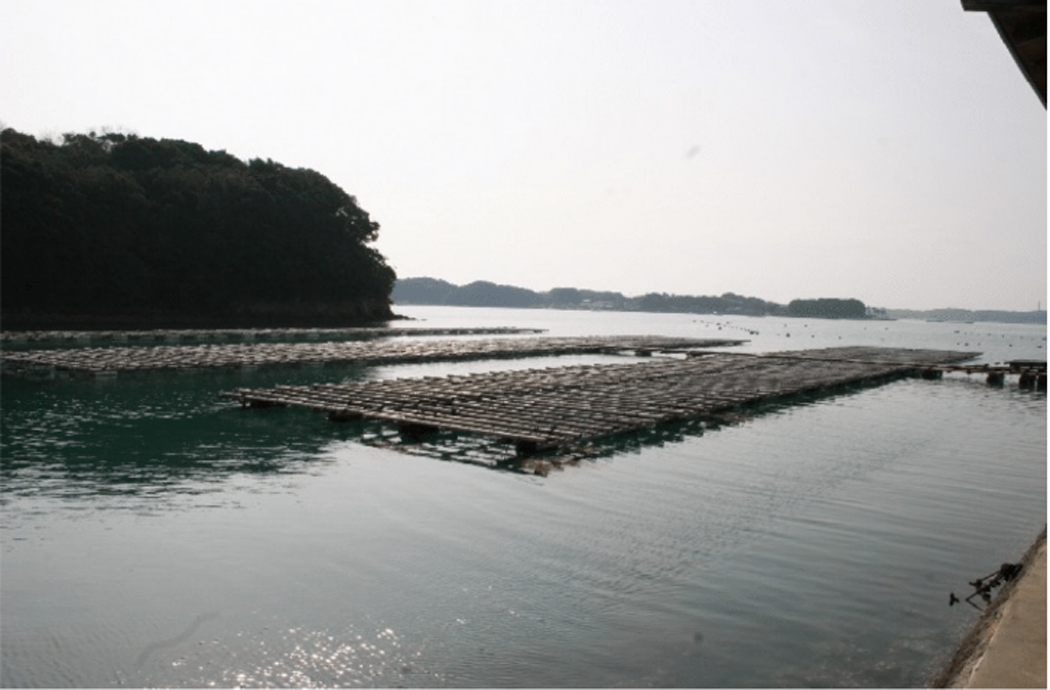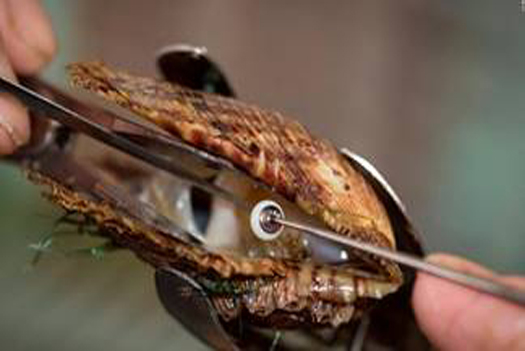The Japanese Akoya pearl is the Classic Pearl. Truly the diamond of the seas, this saltwater gem holds a revered distinction of being a symbol of beauty, elegance, and grace. Of all the cultured pearls, fine Japanese Akoya pearls are high in quality with perfectly round shapes and brilliant, mirror-like luster. These bead-nucleated pearls are commonly seen in pearl strands and earrings, in well-matched settings for size, shape and color.
Akoya Pearls

Akoya pearls in various colors
Primarily from the waters of Japan, small oysters known as the Pinctada Fucata produce the Akoya pearl. This is the smallest pearl-producing oyster in the world. The Akoya pearl ranges from 2mm to 10mm in circumference, with an average size of 6mm to 7mm. With the majority of production taking place in Japan, they are also farmed in China, Vietnam and other parts of the Asia-Pacific area where the right oceanic temperature and pH balance attribute for the Akoya pearls’ legendary beauty.

Photo of Akoya farm
The history of Akoya pearls is inextricably linked to Kokichi Mikimoto, known today as the “Father of Cultured Pearls.” However, the true origin of cultured Akoya pearls does not belong to Mikimoto alone. In 1893, he successfully grew and harvested cultured Akoya blister pearls (half pearls formed on the inner surface of the shell).

Kokichi Mikimoto

Pearl grafting operation. Credit: TASAKI
At about the same time, marine biologist Tokichi Nishikawa and a carpenter, Tatsuhei Mise were separately working with pearl formation and both successfully nucleated the Akoya pearl oyster. Combining their methods and know-how, they created the perfectly spherical Akoya pearl. The grafting technique widely used today is known as the Mise-Nishikawa Method. Mikimoto improved on his own original patent, incorporated the new techniques, and in 1916, began the mass production of cultured akoya pearls.
The traditional Akoya pearl color is white. Other natural colors are cream, pink, blue, silvery-blue, and even yellow and gold. Dark-colored Akoya pearls do exist, but they are products of organic dye treatments or irradiation processes.

Black Akoya Pearls

